#Nissan Skyline GT-R Coupe C10
Text

Nissan Skyline GT-R Coupe C10
@speed_forme
#Nissan Skyline GT-R Coupe C10#modified#stance#tuning#retro rides#tuner#slammed#street#imports#lowered#jdm#70s japanese sports cars#vintage#classic car#fitment#static#kyusha#shakotan
200 notes
·
View notes
Text
Need For Speed é uma das franquias de corrida mais clássicas dos jogos eletrônicos, lançada em 1994, e promete se superar no novo game, chamado Need For Speed Unbound.
PUBLICIDADE
A Criterion Games e a Electronic Arts revelaram que o próximo jogo vai contar com um catálogo com 143 modelos de carro, superando a quantidade disponível no NFS: Heat, com 127 no total. São eles:
Acura NSX 2017
Acura RSX-S 2004
Alfa Romeo Giulia Quadrifoglio 2016
Aston Martin DB5 1964
Aston Martin DB11 Volante 2018
Aston Martin DB11 2017
Aston Martin Vulcan 2016
BMW M3 2006
BMW M3 Evolution II 1988
BMW X6 M 2016
BMW M3 2010
BMW M5 2018
BMW Z4 M40i 2019
BMW M4 Coupe 2018
BMW M2 Competition 2019
BMW M1 1981
BMW i8 Coupe 2018
BMW M4 GTS 2016
BMW M3 Convertible 2010
BMW M4 Convertible 2017
BMW i8 Roadster 2018
Bugatti Chiron Sport 2017
Buick Grand National GNX 1987
Chevrolet Corvette Stingray 2020
Chevrolet Corvette Stingray Convertible 2020
Chevrolet C10 Stepside Pickup 1965
Chevrolet Corvette Grand Sport 2017
Chevrolet Camaro Z28 2014
Chevrolet Corvette Z06 2013
Chevrolet Camaro SS 1967
Chevrolet Bel Air 1955
Chevrolet Corvette ZR1 2019
Chevrolet Colorado ZR2 2017
Dodge Challenger SRT8 2014
Dodge Charger R/T 1969
Dodge Charger SRT Hellcat 2019
Ferrari LaFerrari 2016
Ferrari Testarossa Coupé 1984
Ferrari 488 GTB 2016
Ferrari F40 1988
Ferrari 458 Italia 2009
Ferrari 488 Pista 2019
Ferrari FXX-K Evo 2018
Ferrari 458 Spider 2011
Ford F-150 Raptor 2017
Ford Mustang GT 2015
Ford GT 2017
Ford Mustang BOSS 302 1969
Ford Mustang 1965
Ford Mustang Foxbody 1990
Ford Crown Victoria 2008
Ford Focus RS 2016
Ford Mustang GT Convertible 2019
Honda Civic Type-R 2000
Honda Civic Type-R 2015
Honda NSX Type-R 1992
Honda S2000 Ultimate Edition 2009
Infiniti Q60S 2017
Jaguar F-Type R Coupe 2016
Jaguar F-Type R Convertible 2019
Koenigsegg Regera 2016
Lamborghini Countach LPI 800-4 2021
Lamborghini Huracán LP580-2 2018
Lamborghini Aventador S 2018
Lamborghini Countach 25th Anniversary 1989
Lamborghini Murciélago SV 2010
Lamborghini Urus 2018
Lamborghini Huracán Performante 2018
Lamborghini Aventador SVJ Coupe 2019
Lamborghini Diablo SV 1995
Lamborghini Huracán LP580-2 Spyder 2018
Lamborghini Aventador S Roadster 2018
Lamborghini Aventador SVJ Roadster 2019
Lamborghini Aventador LP750-4 SV Roadster 2018
Lamborghini Huracán Performante Spyder 2018
Land Rover Range Rover Sport SVR 2015
Land Rover Defender 110 Double Cab Pickup 2015
Lotus Exige S 2006
Lotus Emira 2021
Mazda RX-7 Spirit R 2002
Mazda MX5 1996
Mazda RX-8 Spirit R (R3) 2011
Mazda MX5 2015
McLaren P1 2014
McLaren F1 1993
McLaren 570S 2015
McLaren 570S Spider 2018
McLaren 600LT 2018
McLaren P1 GTR 2015
Mercedes-Benz 190E 2.5-16 1988
Mercedes-AMG C 63 Coupe 2018
Mercedes-AMG G 63 2017
Mercedes-AMG GT S 2019
Mercedes-AMG A 45 2016
Mercedes-AMG GT R 2017
Mercedes-AMG GT S Roadster 2019
Mercedes-AMG C 63 Cabriolet 2018
Mercedes-AMG GT Black Series 2021
Mercury Cougar 1967
MINI John Cooper Works Countryman 2017
Mitsubishi Lancer Evolution IX 2007
Mitsubishi Lancer Evolution X 2008
Mitsubishi Eclipse GSX 1999
NISSAN GT-R Premium 2017
NISSAN Skyline GT-R V·Spec 1999
NISSAN 370Z Heritage Edition 2019
NISSAN Silvia K’s 1998
NISSAN Z Prototype 2022
NISSAN Silvia Spec-R Aero 2002
NISSAN Skyline GT-R V·Spec 1993
NISSAN 350Z 2008
NISSAN Skyline 2000 GT-R 1971
NISSAN Fairlady 240ZG 1971
NISSAN 180SX Type X 1996
NISSAN 370Z Nismo 2015
NISSAN GT-R Nismo 2017
Pagani Huayra BC 2017
Plymouth Cuda 1970
Polestar Polestar 1 2020
Pontiac Firebird 1977
Porsche 911 GT3 RS 2019
Porsche 911 Carrera RSR 2.8 1973
Porsche 918 Spyder 2015
Porsche 718 Cayman GTS 2018
Porsche 911 Carrera S 1997
Porsche 911 GT2 RS 2018
Porsche Panamera Turbo 2017
Porsche 911 Turbo S Exclusive Series 2018
Porsche Boxster 718 Spyder 2020
Porsche 911 Carrera GTS 2018
Porsche 911 Turbo S Cabriolet Exclusive 2018
Porsche 911 Targa 4 GTS 2018
Porsche 911 Carrera GTS Convertible 2018
Porsche Cayman GT4 2015
SRT Viper GTS 2014
SUBARU Impreza WRX STI 2006
SUBARU BRZ Premium 2014
SUBARU Impreza WRX STI 2010
Volkswagen Beetle 1963
Volkswagen Golf GTI 1976
Volkswagen Golf GTI Clubsport 2016
Volvo 242DL 1975
Volvo Amazon P130 1970
Need for Speed Unbound será lançado em 2 de dezembro para PS5, Xbox Series X|S e PC.

1 note
·
View note
Photo

Nissan Skyline GT-R Coupe c10 🍉𝙍𝙊𝙏𝙏𝘼𝙈𝙄 𝘽𝘼𝙎𝙎𝙄🍉 🍍𝙎𝘾𝙍𝘼𝙋'𝙉 𝙇𝙊𝙒🍍 🔧𝙊𝙁𝙁𝙄𝘾𝙄𝙉𝘼 𝘾𝙇𝘼𝙉𝘿𝙀𝙎𝙏𝙄𝙉𝘼🔩 #japancar #japanculture #jdm #jdmcars #jdmgram #jdmnation #jdmculture #jdmlifestyle #RottamiBassi™ #OfficinaClandestina🔧 #classiccar #carporn #cars #speedhunters #midnightclub (presso Italy) https://www.instagram.com/p/CTkE2SZD3jj/?utm_medium=tumblr
#japancar#japanculture#jdm#jdmcars#jdmgram#jdmnation#jdmculture#jdmlifestyle#rottamibassi™#officinaclandestina🔧#classiccar#carporn#cars#speedhunters#midnightclub
0 notes
Text
Here’s The Full Car List For Need For Speed Heat
Now that Need For Speed Heat got its gameplay trailer reveal at gamescom’s first Opening Night Live, we got some more details on the anticipated open-world racer. But you don’t expect to learn the full car list this early now do we?
And yet here we are. Over on the official site is the full car list. All 124 of them. For comparison, Payback has 78 + 7 DLC cars. The big jump here is due to two factors: Ferrari is back after missing from Payback with 8 cars. And new to Heat is open-top cars, most of them being new cars.
BMW, Lamborghini and Porsche are the leading brands that got a massive bump of cars, with most cars from Payback (aside from the Porsche 911 Carrera S (993), Ford Roadster and Ford Roadster – Beck Kustoms) are either return or updated to a newer model year/variant.
Still no sight of a Toyota, unfortunately. But! With the game set in Palm City (fictional Miami) and the game’s promo art leaning on the 80’s blue and purple hues, there’s a Ferrari Testarossa and a Lamborghini Countach, the perfect icons from that era.
Here’s the long list in full:
Acura RSX-S
Acura NSX
Alfa Romeo Giulia Quadrofoglio
Aston Martin DB5
Aston Martin Vulcan
Aston Martin DB11
Audi S5 Sportback
Audi R8 V10 Performance Coupe
BMW M3 E46 GTR
BMW I8 Roadster
BMW Z4 M40i
BMW M4 Convertible
BMW M4
BMW M2 Competition
BMW M4 GTS
BMW M3
BMW M3 Evolution II
BMW M3
BMW M5
BMW I8 Coupe
BMW X6 M
Buick Grand National
Chevrolet Camaro SS
Chevrolet Bel Air
Chevrolet C10 Stepside Pickup
Chevrolet Camaro Z28
Chevrolet Colorado ZR2
Chevrolet Corvette ZR1 Coupe
Chevrolet Corvette Grand Sport
Chevrolet Corvette Z06
Dodge Charger
Dodge Challenger SRT8
Ferrari FXX-K Evo
Ferrari LaFerrari
Ferrari Testarossa Coupé
Ferrari 488 Pista
Ferrari 458 Spider
Ferrari 458 Italia
Ferrari F40
Ferrari 488 GTB
Ford Mustang
Ford Mustang Boss 302
Ford Focus RS
Ford Mustang GT
Ford Mustang Foxbody
Ford F-150 Raptor (FEM From NFS Payback)
Ford F-150 Raptor
Ford GT
Honda Civic Type-R (2017)
Honda Civic Type-R (2000)
Honda S2000
Honda NSX Type-R
Infiniti Q60S
Jaguar F-Type R Convertible
Jaguar F-Type R Coupe
Koenigsegg Regera
Lamborghini Aventador SVJ Roadster
Lamborghini Huracan Performante Spyder
Lamborghini Aventador S
Lamborghini Aventador S Roadster
Lamborghini Huracan Spyder
Lamborghini Countach 25th Anniversary
Lamborghini Aventador SVJ Coupe
Lamborghini Huracan Performante
Lamborghini Huracan
Lamborghini Diablo SV
Lamborghini Murciélago SV
Land Rover Defender 110 Double Cab Pickup
Land Rover Range Rover Sport SVR
Lotus Exige S
Mazda Rx-7 Spirit R
Mazda MX5 (2015)
Mazda MX5 (1996)
Mclaren P1 GTR
Mclaren P1
Mclaren 570S Spider
Mclaren 600LT
Mclaren 570S
Mercedes-AMG C63 Coupe
Mercedes-AMG A 45
Mercedes-AMG GT S Roadster
Mercedes-AMG GT R
Mercedes-AMG GT
Mercedes-AMG G63
Mercury Cougar
Mini Countryman John Cooper Works
Mitsubishi Lancer Evolution X
Mitsubishi Lancer Evolution IX
Nissan 370Z 50th Anniversary Edition
Nissan 370Z Nismo
Nissan 350Z (Rachel’s From NFSU2)
Nissan Skyline GT-R (Eddie’s From NFSU)
Nissan 180SX Type X
Nissan 350Z
Nissan Skyline GT-R V·Spec
Nissan Fairlady 240ZG
Nissan Skyline GT-R V·Spec
Nissan Silvia Spec-R Aero
Nissan Skyline 2000 GT-R
Nissan GT-R Nismo
Nissan GT-R
Pagani Huayra BC
Plymouth Barracuda
Polestar Polestar 1
Pontiac Firebird
Porsche 918 Spyder
Porsche 911 Carrera GTS Cabriolet
Porsche 911 Turbo S Exclusive Series Cabriolet
Porsche Panamera Turbo
Porsche 911 GT3 RS
Porsche Cayman GT4
Porsche 911 Carrera GTS
Porsche 911 Targa 4 GTS
Porsche 718 Cayman GTS
Porsche 911 Turbo S Exclusive Series
Porsche 911 Carrera RST 2.8
Porsche 911 Carrera S
Porsche 911 GT2 RS
SRT Viper GTS
Subaru BRZ Premium
Subaru Impreza WRX STI (2010)
Subaru Impreza WRX STI (2006)
Volkswagen Beetle
Volkswagen Golf GTI Clubsport (2016)
Volkswagen Golf GTI Clubsport (1976)
Volvo Amazon P130
Volvo 242DL
The extra three cars are special liveried cars from past Need For Speeds.
You can start customising the cars already via the NFS Heat Studio app, now available on iOS and Android. The customisations can later be imported to the full game.
Need For Speed Heat will be out on November 8th for the PS4, PC (Origin) and Xbox One.
Here’s The Full Car List For Need For Speed Heat published first on https://touchgen.tumblr.com/
0 notes
Text
A Brief History of the Nissan Skyline and GT-R – Everything You Need To Know
The Nissan Skyline GT-R – Godzilla
When the name “Nissan Skyline” is mentioned it often brings another name to memory, that of Godzilla, a name given to the seemingly unbeatable 1989 Nissan Skyline GT-R in its 1990 racing guise, the NISMO GT-R, by the Australian motor press after its three consecutive Group A Championship wins from 1990-1992 topped off by two wins in the Bathurst 1000 in 1991-1992.
This had been a car that took not just the motor race, but the technology race squarely up against Porsche and their all wheel drive 959 in a successful effort to beat them at their own game. In order to optimize handling and best distribute the more than 600hp of the RB26DETT 2.6 liter twin turbocharged straight six cylinder DOHC engine Nissan’s engineers developed the ATTESSA E-TS all wheel drive system which used an electro-hydraulic clutch system to distribute that power between the rear and front wheels.
In the case of the racing Nissan Skyline GT-R the power distribution was primarily to the rear wheels until the power was such that they could not grip, at which time the extra horsepower was sent to the front wheels so all wheels maintained traction.
These were sophisticated examples of the best in automotive engineering, but they were actively evolved from a technological legacy that extended back into the 1960’s, and to a company named Prince, which was acquired by Nissan in 1966.
Prince, the Skyline Name, and a Penchant for Racing
Prince Motor Company were motivated towards motor racing both as a means to develop their car technology, and as a means to raise the public profile of their company.
One of the main driving forces in Prince was Shinichiro Sakurai, who had joined Prince as a chassis engineer in 1952 and was closely involved in the development of the original Prince Skyline. That first series of cars called the Prince Skyline were very conventional passenger car powered by a 60hp OHV in-line four cylinder engine and made in four door sedan and five door station wagon variants.
Shinichiro Sakurai would go on to be a driving force in the development of the Skyline GT-R up until his passing in 2011.
Dr. Sakurai began his journey in motor racing with the formation of the Prince Motoring Club in 1964, after a factory team of Prince Skyline S54 GT cars had suffered defeat in the Japanese Grand Prix that year. The Prince S54 was fitted with a SOHC G-7 1,998cc inline six cylinder engine, the engine that would form the basis for the later Datsun 510 and 240Z engines.
The Skyline S54 GT cars had been up against a Porsche 904 racing car that had been privately entered and, despite being outclassed by it, obtained second through to sixth places – but for Prince Motors there was to be no second place winner and work began on creation of their own Porsche 904 beating race car.
The Prince Motoring Club team including Dr. Sakurai got to work on a mid-engine racing car, in some respects similar to the Porsche 904 but built on a modified Brabham BT8 chassis. Into this proven racing chassis they installed a new variant of the G-7 engine, the DOHC double-valve 1,996cc GR-8 producing 200hp, and mated to a Hewland 5 speed racing transmission.
1966 was to be the year that four R380 cars were fielded at the Japanese Grand Prix against three Porsche 906. The result was what Nissan and the original Prince Motoring Club had hoped and worked for, first and second place.
It would be the last time the cars would race under the Prince banner however. Nissan acquired Prince that year but went on to further develop the R380, raising the engine power to 220hp, and redesigning the R380’s bodywork for optimal aerodynamics.
The Prince Skyline Sport and the Skyline 2000GT
There had been some sporty Prince cars bearing the Skyline name in the early 1960’s. Prince Motors understood marketing, and thus wanted to not only build cars that would get people’s attention but to actively put these cars into view in the most effective way possible.
To this end they turned to Italian designer Giovanni Michelotti (the man who also designed the Triumph Spitfire) and had him create a new and eye catching body for their otherwise rather ordinary looking S21 Skyline. By 1962 This new Skyline Sport (BLRA-3) was put into limited production both as a coupe and a convertible. These cars were fitted with a GB-4 1,862cc OHV engine producing a modest 94bhp @ 4,800rpm with 113lb/ft torque @ 3,800rpm.
Prince managed to get these Skyline Sport cars in a number of Japanese films by the Toho company thus raising the profile of the company’s cars in much the same way that the James Bond film “Goldfinger” made the Aston Martin DB5 a cultural icon and another Bond movie “You Only Live Twice” would similarly raise the profile of the Toyota 2000GT.
This Prince Skyline Sport is the car that began the journey that would result in the Skyline GT-R series of cars: it didn’t have awe inspiring power, but it did have style.
The S21 based Prince Skyline Sport was followed by the S54 based Prince Skyline GT of May, 1964. It was the racing version of this car that the Prince Motoring Club took to the Japanese Grand Prix of 1964 and finished second, beaten only by a specialist racing Porsche 906.
That second through to sixth place for the Skyline GT led to lots of enthusiastic people with open checkbooks looking eagerly in Prince’s direction and they did not disappoint these customers: they put the car into production.
The road car was called the Prince Skyline 2000GT and was made in two versions. The GT-A version had the designation S54A and was fitted with the 1,988cc G-7 six cylinder engine breathing through a single carburetor and producing 104hp. The high performance version was the GT-B, designated the S54B, with the engine breathing through no less than three dual throat Weber 40DCOE-18 carburetors and producing 123hp @ 5,600rpm, not a race car, but a lively performer by 1960’s standards.
The GT-B also featured a limited slip differential, five speed close ratio gearbox and servo assisted brakes. Both the GT-A and GT-B were fitted with dual piston disc brakes at the front and finned aluminum drums at the rear.
These cars were sold on the Japanese market, and also exported to Australia where there was a Prince dealership in the state of South Australia. In those export cars both the GT-A and GT-B were fitted with the high performance triple Weber carburetor engine, but the GT-A had a four speed manual gearbox while the GT-B was fitted with a German ZF five speed gearbox.
The First Generation Nissan Skyline GT-R “Hakosuka” (1969-1972)
The first of the Nisssan Skyline cars to wear the GT-R name was the C10 series which was developed by Prince at their Okikubo research and development center in Tokyo in 1968. The base model Nissan Skyline was introduced fitted with either the 1.5 liter Prince SOHC G15 inline four cylinder engine or optionally with the 1.8 liter G18.
There was also a sports model, the 2000GT, which was initially powered by a Prince G-7 SOHC 1,988cc inline six cylinder engine and then in September 1971 that was changed in the 2000GT-X model to an L20SU, from the same engine family as used in the Datsun 510 and 240Z.
The Nissan Skyline GT-R (model designation PGC-10) made her debut at the Tokyo Motor Show of February 1969. Costing almost twice as much as her more ordinary Nissan Skyline siblings the PGC-10 was fitted with an S20 inline six cylinder engine derived from the engine that had been used for the Prince R380 racing car.
This 1,989cc DOHC engine was originally fitted with triple Weber 40DCOE dual throat carburetors and tuned to produce 160hp @ 7,000rpm with torque of 87lb/ft. Later in October of that year the fuel system was changed to a British Lucas mechanical fuel injection: all that lovely power was sent to the rear wheels via a five speed manual all synchromesh gearbox.
youtube
Suspension of this first Nissan Skyline GT-R was independent all around with McPherson struts at the front and semi-trailing arms at the rear: a similar suspension to that used on the Nissan/Datsun 510 and later 240Z. Like the Datsun 510 and 240Z this intelligently designed fully independent suspension gave the Skyline GT-R stable handling, even when the going got rough, making it a car that could be driven to its limits with confidence.
From 1969 up until 1971 this Nissan Skyline GT-R was made as a four door sedan and then in March 1971 a two door coupé was also made available (the KGPC-10). The car performed well in competition with the sedan version gaining thirty three wins in less than two years and the coupé another seventeen.
Japanese car enthusiasts nicknamed the car Hakosuka (ハコスカ), which is a condensation of “Skyline Box” in Japanese: hako (ハコ) translates as “box” and suka(スカ)being a contraction of Sukairain (スカイライン) which translates as “Skyline”. So the “Hakosuka” made the name Nissan Skyline GT-R something of a household word.
Second Generation Nissan Skyline GT-R “Kenmeri” (1972-1977)
The 1972 Tokyo Motor Show saw the debut of the successor to the C10 “Hakosuka”: the C110 Nissan Skyline. The 1,989cc S20 inline six cylinder engine with its heritage in the Prince R380 racing car, and five speed gearbox migrated from the GPC-10 into the new and quite different looking bodywork of the C110.
The Nissan Skyline C110 series were made in the same body styles as its predecessor, four door sedan, five door station wagon, and coupé. In export markets the model was sold as the Datsun K series and it appears to have been a very popular model.
The popularity is often attributed to the Nissan advertising campaign which featured “Ken and Mary” and this resulted in the model being dubbed the “Kenmeri”.
The GT-R version made its debut in September 1972 but with the impact of the worldwide oil crisis production of the Skyline GT-R was ended in March 1973. The KPGC110 Nissan Skyline GT-R was fitted with the tried and proven S20 DOHC inline six cylinder engine as used in the first generation cars, with five speed manual gearbox.
Only 197 of these cars were sold in Japan and they were not exported. Nissan withdrew from motor racing and this second generation Skyline GT-R would be the last for a period of years.
The Nissan Skyline R30 “Tekkamen” (1981-1985)
During the years that followed the oil crisis the Skyline GT-R name would be absent, while Nissan continued to make a quite ordinary cars for everyday use, some more stylish than others. The R30 series was introduced in August of 1981 and offered with a variety of four and six cylinder engines, generally shared with other Nissan/Datsun cars.
Body styles expanded from four door sedan, station wagon, and two door coupé to include the new three door “hatchback” style which was becoming popular around that time. The R30 could be had in luxury versions, including one powered by an L20ET SOHC turbocharged engine and there was also an FJ20 DOHC double valve four cylinder engine, the first production four valves per cylinder engine from a Japanese maker.
Added to this were simple economy engines and an LD28 inline six cylinder diesel: diesel engines were becoming moderately popular due to their good fuel economy, and in places such as Australia because diesel was the fuel of choice for primary producers.
The most notable model during the R30’s production life was the Nissan Skyline 2000RS which appeared on October 2nd, 1981. This model was designated the DR30 and was powered by a conventionally aspirated FJ20E four cylinder DOHC 1,990cc engine with electronic fuel injection (as identified by the “E” suffix to FJ20E).
The car was a stripped down lightened Skyline which weighed a modest 2,491lb and with the engine developing 148hp @ 6,000rpm and 133lb/ft torque @ 4,800rpm it was a lively performer. This was only to get better in 1983 when the model was upgraded with a turbocharged version of that same engine, the FJ20ET (the “T” suffix denoting Turbocharged). The turbocharged model was badged the Nissan Skyline 2000RS-Turbo and the engine now produced 188hp @ 6,400rpm with 166lb/ft torque @ 4,800rpm.
The Nissan Skyline 2000RS-Turbo was fitted with the most powerful Japanese production car engine of that period and the car was kept lightweight so it could use that power to good advantage.
Once the Skyline 2000RS-Turbo had established its performance street cred it became a desirable car and this curiously resulted in Nissan deciding that it was a “top of the line” model and therefore should have luxury features such as electric windows, air-conditioning and power steering, and a electronic driver’s seat with power lumbar support, all of which added to its weight bringing it up to 2,723 lb and of course causing performance to decline.
This was the Nissan Skyline RS-X model, the “X” denoting “eXtra”: extra luxury, extra weight, and not so fast or clean handling as its nimble predecessor. This car was given a new front end styling treatment which led to it being nicknamed “Iron Man” (Tekkamen (鉄仮面)) after the superhero character whose mask the car’s front end resembled.
For 1984 the car’s engine was fitted with an air-to-air intercooler which enabled the compression ratio of the engine to be increased from 8.0:1 to 8.5:1 boosting its power to 202hp @ 6,400rpm and torque to 181lb/ft @ 4,400rpm. This model was called the Nissan Skyline 2000RS-Turbo C and the extra power helped to restore the performance of the car while keeping the luxury extras.
This car was the basis for the GT-R works Super Silhouette racing car which ran in the All Japan Sports Prototype Championships, the car being sponsored by Japanese toy maker Tomicar. The Nissan Skyline 2000RS-Turbo C was also the basis for the cars that competed in the 1986 Australian Touring Car Championships winning four of the six races, and the Australian Endurance Championship, finishing in second place to a BMW 635 CSi. Nissan won the 1986 Manufacturer’s Championship and drew with BMW for the following year.
The combination of having the 340hp DR30 Nissan Skyline 2000RS racing cars becoming something of a cult car in Japan and their string of competition successes paved the way for Nissan to decide that resurrecting the GT-R model might just be a good idea.
The oil crisis was passed, people had figured out that we were not likely to run out of oil any time soon, and there were people with fat checkbooks wanting a Skyline GT-R. Not only that but there were children playing with their Tomicar model Skyline GT-R’s who would grow up to have a salary, a checkbook of their own, and a desire to own a twelve inches to the foot scale model GT-R that they could jump into and drive and get speeding tickets of their own in.
1984 was the year Nissan decided to merge its existing two motorsport departments into a new entity called “Nismo” which was an abbreviation for Nissan Motorsport International Limited. This new entity would be responsible for creating a range of competition cars, tuning kits, and campaigning in motorsport events.
The R31 2000 GTS-R (1985-1987)
The R31 series of the Nissan Skyline would introduce new technologies, technologies that would greatly enhance the coming generations of the Skyline GT-R models.
The R31 series introduced the new RB engines in both SOHC single valve and DOHC iterations. The RB engines were derived from the Nissan L engines as used in the Datsun 510 and 240Z, which were based on a Mercedes-Benz engine which Prince made under license and then developed into a new design of their own.
A new steering technology made its appearance in the R31 Nissan Skyline cars: High Capacity Actively Controlled Steering (HICAS) which provided rear wheel steering to compliment the conventional front wheel steering. The HICAS system as first used in the R31 Skyline used hydraulics connecting the front to the rear to provide the rear wheel steering.
This was speed sensitive and used the vehicle’s speedometer to determine the nature of the rear wheel steering to provide: at low speeds the rear wheel steering was optimized for close maneuvering, at higher speeds for highway stability and cornering.
The R31 series of Nissan Skyline models included cars at varying levels of performance from utilitarian and economical to more luxurious, and to higher performance. At the top of the performance models were the Nissan Skyline 2000 GTS cars which first appeared in August 1985. From thjis model would come the successor to the Skyline 2000RS racing cars, the Skyline GTS-R coupé.
The Skyline 2000 GTS saw a move from the DOHC turbocharged four cylinder engine of the 2000RS cars to a DOHC six cylinder. This new engine was the RB20DET and it featured twin cams because it had double valves, and an intercooled turbocharger. Power output was 212hp @ 6,400rpm with a solid amount of torque, 195lb/ft @ 3,200rpm, perfect for the road going GTS and luxurious GTS-X.
The Skyline GTS-R coupé was a very limited production car that made its debut in late 1987, with just 823 made. This model was only put into production to provide the homologation necessary to enable the car to compete in Group A Touring Car racing.
This racing car’s engine featured a larger turbocharger on a tubular steel exhaust manifold, and a larger front mounted intercooler. This racing engine produced over 430hp and would prove itself to be a competitive Group A competition car down in Australia where Jim Richards and Mark Skaife campaigned in a Skyline GTS-R coupé that had been race prepared by Gibson Motor Sport in the 1989 Sandown 500, and then went on to win six out of eight races to win the 1990 Australian Touring Car Championships.
Third Generation R32 GT-R (1989-1994)
The Nissan Skyline R32 series moved to be more sporting rather than utilitarian. The body styles were limited to either four door sedan or two door coupé.
The smallest engine option for the R32 Skylines was the 90hp 1,800cc RXi inline four cylinder fitted to the GXi model. The remaining cars were powered by the RB series of inline six cylinder engines fitted with the ECCS (Electronically Concentrated Control System) electronic fuel injection. R32 models were fitted with the HICAS rear steering system, at this stage of development still hydraulically operated.
Other than the four cylinder GXi the other Skylines featured “GT” in their names; the GTE with a 2.0 liter 123hp engine, the GTS Type X, S and J with a 2.0 liter 153hp engine, the GTS-25 Type X, S and SG fitted with a 2.5 liter 178hp engine, the GTS-t, Type-M fitted with a 2.0 liter RB20DET turbocharged 212hp engine as used on the Skyline 2000 GTS, the Autech GTS-4 fitted with a 2.6 liter RB26DE 217hp engine and also equipped with Autech all wheel drive (of which only 188 were made), and the GT-R fitted with the 2.6 liter RB26DETT twin turbocharged engine and also equipped with all wheel drive.
The RB26DETT engine was stated by Nissan to produce 276hp but this was an understatement: Japanese car makers had a “gentleman’s agreement” not to quote a power of more than 280PS (i.e. 276hp), the actual power output of the RB26DETT engine was 316hp but as set up for the road cars the ECU and exhaust turbocharger boost restricted the available engine power. In race tune the engine would deliver in the order of 500hp.
Nissan were by this stage very much back into motorsport and the R32 Skyline GTR was designed from the ground up with the rule book for Group A racing in the hands of the design team, led by Chief Engineer Naganori Ito. Thus the car was purpose built and it was built to ensure it would defeat Nissan’s main opponent, the Porsche 959. The car was so perfectly purpose built that it would lead to the demise of Group A racing and its substitution with other touring car events.
The GT-R was made to go quickly from the ground up, wheel arches were flared to accommodate the wider wheels and tires, the intercooler was enlarged to cope with the increased turbocharger temperatures, the brakes were enlarged and the car was strategically lightened with aluminum front guards and hood/bonnet. As the GT-R was a road going high performance car the seats were made more supportive both for comfortable touring and for comfortable support during enthusiastic cornering.
The car was also fitted with a new version of Nissan’s ATTESA all wheel drive system. ATTESA stood for Advanced Total Traction engineering system. The version used for the GT-R was a more advanced E-TS ATTESA design but it added 220lb/100kg to the car’s weight.
The additional weight necessitated Nissan moving the GT-R up into the 4,500cc racing class and so they increased the engine capacity of the GT-R to 2.6 liters so that with the turbocharging of the engine they could obtain a competitive 599hp from the engine. The car’s instrumentation included the usual essentials for monitoring engine state but also included a gauge to indicate the ratio of engine power being delivered to the front and rear wheels by the ATTESA system.
We should remember that the Japanese have a well deserved reputation for being perfectionists as was evident when they took the idea of the two handed saber and perfected it into the Japanese “Nihon To” Japanese sword, perhaps the most refined sword on earth. So we can imagine what would happen if a group of perfectionist Japanese engineers got together with the Group A rule book to build the perfect Group A racing car. The results speak for themselves. A Skyline GT-R was taken to Germany’s Nürburgring for an attempt at the 22.81km (14.173 miles) Nordschleife (North Loop) lap record, which stood at 8’45” and was set by a Porsche 944. The Nissan Skyline GT-R lapped the Nordschleife in 8’20” with Japanese driver Hiroyoshi Katoh putting the pedal to the metal. It was a foreboding of what the Skyline GT-R was going to accomplish in motor racing.
From 1989-1993 the Nissan Skyline GT-R’s won the Japanese Touring Car Championship every year, winning 29 out of the 29 races they started in. For the Group N competition, which limited modifications to the cars so they had to be “Showroom Class” standard cars, the GT-R won 50 races out of 50 they started in the N1 Super Taikyu (i.e. Super Endurance) competition from 1991-1997.
The Nissan Skyline GT-R’s were taken “down under” to Australia’s famous Mount Panorama racing track located in the town of Bathurst, New South Wales, where they proceeded to win the annual Bathurst 1000 race in 1991 and 1992. This led to the pretty little Skyline being dubbed “The monster from Japan”, Godzilla. It was during 1991 and 1992 that the plans were put in place in Australian motor sport to create the “V8 Supercars” competition which would favor the domestically produced GM Holden and Ford cars which had previously carved out a legend for themselves at Bathurst’s Mount Panorama.
This competition has survived up until the present day and the races are quite spectacular. We wonder how a 1993 Nissan Skyline GT-R would fare against one of the current V8 Supercars, it would be an interesting one-on-one contest, best done on Mount Panorama.
youtube
In 1993 the Group A rules were changed to increase the allowed wheel size from 16″ to 17″, which led to the creation of the Skyline GT-R V-Spec cars in February of that year, fitted with 17″ BBS mesh wheels and the larger disc brakes with Brembo calipers the bigger wheels permitted. Wider 245/45 17″ tires were fitted for 1994 in the revised model, the Skyline GT-R V-Spec II. The “V” coincidentally stood for “Victory” as one would expect.
“Godzilla” had monstered the competition and also prompted the ruling bodies to change the competition rules: the Skyline GT-R had certainly made its mark.
Fourth Generation R33 GT-R (1993-1998)
With its image established as a sporting car the R33 Nissan Skylines were kept quite close to the concept of the successful R32 series. The new R33 was about an inch wider and four inches longer than its predecessor, and it gained some mandatory safety equipment, notably airbags, and internal crash bars.
Despite being physically a little larger Nissan’s engineers worked to reduce weight wherever possible to compensate for the additional weight created not only by the size increase but also by the additional safety equipment that had to be installed. The strategies used to decrease weight included using more sophisticated metallurgy with regards to the steel being used in body construction, hollowing out side door beams and the rear anti-roll bar, use of plastics for such items as the fuel tank, and use of lighter sound deadening materials.
Great attention was also put into the aerodynamics of the new model both to make it slip through the air more easily and to improve its stability by giving it more down-thrust as the speed increased. The R32 had suffered from some problems associated with lift at speed and so these problems were addressed in the R33.
Nissan did some reshuffling of its model line-up for the R33 family of Skylines. All bar one of the models were given “GT” in their names. The models were; the HR33 GTS fitted with a 2.0 liter inline six cylinder RB20E SOHC producing 128hp and torque of 127lb/ft, or fitted with the more powerful version of the RB20E engine producing 153hp with torque of 142lb/ft. Next was the ER33 GTS-25 which was fitted with the RB25DE DOHC inline six cylinder engine producing 187hp with 170lb/ft of torque: the ER33 GTS was also made with all wheel drive as the Skyline ENR33 GTS-4.
Moving up in the power stakes the next model was the ECR33 GTS-25t: this was fitted with the turbocharged RB25DET engine producing 247hp and 217lb/ft of torque. The naturally aspirated RB25DE and turbocharged RB25DET engines were fitted with a Nissan Variable Timing Control system, which was called NVCS for this engine.The most powerful of the R33 series curiously was not called a GT but was the ECR33 P.Ride 280 MR with the 2.8 liter turbocharged DOHC RB28DETT producing 296hp.
The GT-R models benefited from the detail engineering that went into making them as light as possible, with the base model Skyline GT-R tipping the scales at 1,540 kg (3,395 lb) while the GT-R V-Spec was 10kg (22lb) heavier. The attention to making the vehicle as light as possible had in part been made necessary because of the Japanese government regulations which limited engine power to 280PS: so in order to make the GT-R faster, the power to weight ratio had to be improved.
With these improvements a R33 GT-R was taken to Germany’s Nürburgring for a new attempt at breaking the record on the Nordschleife (North Loop) lap record. The new R33 GT-R did not disappoint putting down a lap time of 7’59”, while a GT-R V-Spec car managed 7’57”. Nissan was not able to use the R33 GT-R to dominate motorsport in the way they had with the R32 in Group A. They made a showing at the 24 Hours Le Mans in 1995 with two purpose built race cars, with one finishing fifth in class and tenth overall, while the other suffered a gearbox failure.
This quite successful attempt at Le Mans was celebrated the following year, 1996, with a NISMO GT-R LM model fitted with some carbon fiber panels and painted in “Champion Blue”. The LM version was also made in an even higher performance V-Spec version.
Other limited production models were also made including the 40th Anniversary of the GT-R four door GT-R which was first made by Autech, and then a second by Nismo and Autech working in collaboration. There was also a Nismo 400R with such features as some carbon fiber body parts, a 400hp engine, and twin plate clutch to cope with those four hundred enthusiastic horses.
The four main versions of the GT-R were; the base GT-R fitted with the RB26DETT twin turbocharged 2.6 liter inline six cylinder engine producing 301hp (although advertised as only 280PS) with 277lb/ft of torque. This model was fitted with the ATTESA-ETS all wheel drive system and the improved electronic Super HICAS all wheel steering system.
The next model was the GT-R LM fitted with the same engine but without the all wheel drive feature: so it was a conventional front engine rear drive car. The next model was the Nismo 400R which was fitted with the 2.8 liter RBX-GT2 DOHC twin turbocharged inline six producing 395hp and 353lb/ft torque, and fitted with the all wheel drive system. Last but by no means least was the rare 4 door GT-R Autech Version four door 40th Anniversary car fitted with the RB26DETT DOHC inline six as used on the GT-R and GT-R LM producing 301hp and 277lb/ft of torque, but again advertised as producing 280PS.
Only 400 of these four door 40th Anniversary models were made but they were, of course, the perfect car for a family man with a bit of a Jekyll and Hyde personality.
Fifth Generation R34 GT-R (1998-2002)
When we look back to 1998 we see that personal computers and the Internet were making their way into people’s lives, this sort of technology was becoming fashionable. Microsoft introduced their new operating system “Windows 98” to replace Windows 95, while the world’s number one Internet search engine was AltaVista: Google was not yet a dominant force.
This digital technology was finding its way into many areas of our lives and it found its way into the cars from the Land of the Rising Sun quickly. Japan, Korea and Hong Kong were among the places where this sort of technology achieved rapid market penetration.
The Nissan Skyline was one of the early cars to implement digital technology with a pop-up digital display on turbocharged models. The turn of the millennium, as people worried of a global collapse caused by the “millennium bug” the Skyline was given the option of state of the art Xenon headlights. The R34 engines were built with Nissan’s new NEO technology, which was Nissan’s Ecology Oriented valve lift and timing, a system intended to optimize engine performance and minimize pollution by maximizing efficient fuel use.
The R34 models were the base model GT fitted with an RB20DE NEO whose inline six cylinder produced 153hp with 137lb/ft torque, the 25GT, 25GT-X, 25GT-V, 25GT-FOUR, and the 25GT-X FOUR, all fitted with the RB25DE NEO engine producing 197hp and 188lb/ft torque.
Going up the power scale came the 25GT Turbo and 25GT-X Turbo fitted with the RB25DET NEO six cylinder turbocharged engine producing 280hp and 253lb/ft torque. These models came with various optional extras including more aerodynamic body kits, improved brake, suspension and performance parts. All GT-R models were fitted with the all wheel drive ATTESA E-TS Pro AWD system.
The new R34 Skyline GT-R versions made their debut in 1999 and sported a display unit at the top of the dashboard called the “MFD” (Multi Function Display). This display replaced gauges and provided information such as turbocharger boost pressure, oil and water temperature, and the G-force acceleration the car was under at any given time. The system also incorporated a “lap timer” with control located just by the gear lever.
The R34 Skyline GT-R models were; the base GT-R fitted with the RB26DETT 2.6 liter twin turbo inline six cylinder producing 327hp and 289lb/ft of torque: the engine power being advertised as being just 280PS/276hp.
There was a veritable plethora of derivative models, albeit almost all fitted with the same engine, these being; GT-R V-Spec with different aerodynamic body kit parts, different brake ventilation ducting, a diffuser, and an active limited slip differential (ALSD).
Next came the GT-R V-Spec N1 which came with a blueprinted N1 engine: this car was a stripped down speed machine for the adrenaline enthusiast and had no air-conditioning, no stereo sound system (because the sound of the engine was music enough), no rear screen wiper, and a spartan interior trim. The next model was the GT-R V-Spec II which was the same as the V-Spec N1 but with a carbon fiber hood/bonnet fitted with a NACA duct: this model was also made as the GT-R V-Spec II N1, again with the same Spartan fittings.
Following on from the purist performance oriented cars Nissan understood that there were customers who liked their adrenaline served up in stylish comfort and so the GT-R M-Spec featured leather seats, less sporty more comfort oriented suspension with “Ripple Control” shock absorbers, and heated seats so the driver could be warm and cozy while enjoying their enthusiastic driving.
The GT-R V-Spec Nür and GT-R M-Spec Nür continued with the “enter the comfort zone” luxury speed and both were fitted with 300 km/hr speedometers. The other two models were the GT-R NISMO S-Tune and R-Tune which were the derived from the M-Spec but with some style differences.
Last of the comfort GT-R’s was the GT-R NISMO Z-tune which was fitted with a bored and stroked 2.8 liter RB28DETT twin turbocharged version of the inline six cylinder engine pushing out no less than 493hp and 398lb/ft of torque for drivers with a significant dose of Mr. Hyde in their personality and having strong neck muscles to cope with the rather brisk acceleration. the Z-tune’s standing to 100km/hr time was just 3.8 seconds and its top speed was in excess of 327km/hr.
Only nineteen of the Z-tune cars were made so they have the potential to attract some significant collector value. These cars were made from second hand R34 GT-R V·Spec cars which were completely stripped down and rebuilt using functional components from Nissan’s racing cars, and the engine revised so it was able to get up to 8.000rpm.
Not only was the engine redesigned but the suspension also. The body was strategically reinforced with seam welding in key areas such as around the door frames and use of carbon fiber reinforcing. These were the ultimate R34 Nissan Skyline GT-R cars ever made.
Sixth Generation R35 GT-R (2002-Present)
For the sixth generation of the GT-R Nissan decided to separate the GT-R from the Skyline range of vehicles. This Nissan GT-R was the first to be exported to the United States and marked a distinct separation from the legacy of the previous cars which traced their lineage back to Prince Motors and the R380 racing car.
This new generation GT-R was given a new 3.8 liter V6 engine, the VR38DETT, and while the HICAS all wheel steering was not carried forward into the new model the ATTESA (Advanced Total Traction Engineering System) in a new improved form was very much a part of the new look, and new performance GT-R.
The 3.8 liter V6 engine now churns out an elegantly sufficient 565hp in the standard model and that increases to 600hp for the specialist Nismo model. The R35 GT-R boats a top speed of 310km/hr (193mph) and standing to 60mph time of just 3.2seconds, so it accelerates slightly faster, and has a top speed almost as fast as the very limited production R34 GT-R NISMO Z-tune cars: it is the fastest standard production GT-R ever produced.
The R35 GT-R is every inch a twenty-first century automobile with extensive use of digital technology in the car’s engine and transmission systems, including an active limited slip rear differential controlled by the ATTESA system. The digital display inside the car was created by the programmers who created the “Gran Turismo” video game, bringing video game graphics to the car’s dashboard.
Conclusion
The Nissan Skyline series of cars came from humble beginnings in the post-war era, as the economical Prince Skyline with a 60hp OHV four cylinder engine, and it developed into the current Nissan GT-R with a twin turbocharged engine that develops fully ten times that power level in the Nismo version.
The story of the Skyline’s journey from small car to a digital technology enriched super-car is complex, and it is a tribute to the nation that created it: a nation that prides itself on attending to every fine detail to produce the most refined result possible. Back when I was training the Japanese sword I was visiting Tokyo and one of the sword club members at one stage said to me “for a Japanese what is not seen is just as important, perhaps even more important, than what is seen”.
This was the sort of thinking that led to the technological advances that the Nissan Skyline GT-R cars epitomized, as evidenced by the GT-R being dubbed “Godzilla” by the Australian motoring press: it was at that time the “unbeatable monster from Japan’. Although it was a rather pretty “monster”, don’t you agree?
Photo Credits: Nissan, Prince, RM Sotheby’s.
The post A Brief History of the Nissan Skyline and GT-R – Everything You Need To Know appeared first on Silodrome.
source https://silodrome.com/nissan-skyline-gt-r-history/
0 notes
Text
Опубликован полный список автомобилей Need for Speed Payback
New Post has been published on http://plus-hi-tech.ru/opublikovan-polnyj-spisok-avtomobilej-need-for-speed-payback/
Опубликован полный список автомобилей Need for Speed Payback
Компания Electronic Arts представила полный список автомобилей, которые появятся в предстоящем гоночном симуляторе Need for Speed Payback. В число машин вошли модели таких классов, как Дрэг, Гонки, Дрифт, Внедорожный и Погоня.
Список машин, стоимость и принадлежность к классам:
Acura NSX 2017 - (стоимость: 156 350, классы: Дрэг, Гонки);
Acura RSX-S — (стоимость: 43 450, классы: Внедорожный, Гонки);
Aston Martin DB11 — (стоимость: 154 600, классы: Дрэг, Дрифт, Гонки);
Aston Martin Vulcan — (стоимость: 705 100, классы: Дрэг, Дрифт, Гонки);
Audi R8 V10 plus — (стоимость: 178100, классы: Дрэг, Дрифт, Гонки);
Audi S5 Sportback — (стоимость: 91 000, классы: Дрифт, Гонки);
BMW M2 — (стоимость: 94 350, классы: Дрэг, Дрифт, Гонки);
BMW M3 E46 — (стоимость: 93 850, классы: Дрэг, Дрифт, Внедорожный, Гонки, Погоня );
BMW M3 E92 — (стоимость: 105 150, классы: Дрэг, Дрифт, Гонки);
BMW M3 Evolution II E30 — (стоимость: 77 950, классы: Дрэг, Дрифт, Внедорожный, Гонки, Погоня);
BMW M4 GTS — (стоимость: 105 750, классы: Дрэг, Дрифт, Гонки, Погоня);
BMW M5 — (стоимость: 125 450, классы: Дрэг, Дрифт, Гонки);
BMW X6 M - (стоимость: 117 350, классы: Внедорожный, Гонки, Погоня);
Buick GNX - (стоимость: 56 500, классы: Дрэг, Дрифт, Гонки. Стартовая машина);
Chevrolet Bel Air — (стоимость: 44 450, классы: Дрэг, Дрифт, Внедорожный, Гонки, Погоня. Реликвия);
Chevrolet C10 Stepside Pickup — (стоимость: 43 500, классы: Дрэг, Дрифт, Внедорожный, Гонки, Погоня. Реликвия);
Chevrolet Camaro SS - (стоимость: 49 850, классы: Дрэг, Дрифт, Гонки);
Chevrolet Camaro Z28 — (стоимость: 115 450, классы: Дрифт, Гонки);
Chevrolet Corvette Grand Sport — (стоимость: 116 600, классы: Дрэг, Дрифт, Гонки);
Chevrolet Corvette Z06 — (стоимость: 131 150, классы: Дрэг, Дрифт, Гонки);
Dodge Challenger SRT8 — (стоимость: 92 300, классы: Дрэг, Дрифт, Гонки, Погоня);
Dodge Charger — (стоимость: 105 300, классы: Дрэг, Дрифт, Внедорожный, Гонки, Погоня);
Ford F-150 Raptor — (стоимость: 72 950, классы: Внедорожный);
Ford Focus RS — (стоимость: 76 450, классы: Внедорожный, Гонки, Погоня);
Ford GT — (стоимость: 453 150, классы: Дрэг, Дрифт, Гонки);
Ford Mustang — (стоимость: 38 950, классы: Дрэг, Дрифт, Внедорожный, Гонки, Погоня. Реликвия);
Ford Mustang BOSS 302 — (стоимость: 78 350, классы: Дрэг, Дрифт, Внедорожный, Гонки);
Ford Mustang Foxbody — (стоимость: 56 100, классы: Дрэг, Дрифт, Гонки);
Ford Mustang GT — (стоимость: 88 150, классы: Дрэг, Дрифт, Гонки);
Ford Roadster — (стоимость: 54 200, классы: Дрэг, Дрифт, Гонки);
Ford Roadster — Beck Kustoms — (стоимость: 1 000 000, классы: Дрэг, Гонки);
Honda Civic Type-R 2000 — (стоимость: 58 100, классы: Внедорожный, Гонки);
Honda Civic Type-R 2015 — (стоимость: 75 350, классы: Внедорожный, Гонки, Погоня);
Honda NSX Type-R — (стоимость: 109 300, классы: Дрифт, Гонки);
Honda S2000 — (стоимость: 61 500, классы: Дрэг, Дрифт, Гонки. Стартовая машина);
Jaguar F-Type R Coupe — (стоимость: 137 750, классы: Дрэг, Дрифт, Гонки);
Koenigsegg Regera — (стоимость: 1 150 000, классы: Дрэг, Гонки);
Lamborghini Aventador Coupé — (стоимость: 563 800, классы: Дрэг, Дрифт, Гонки);
Lamborghini Diablo SV — (стоимость: 242 850, классы: Дрэг, Дрифт, Гонки);
Lamborghini Huracán Coupé — (стоимость: 304 100, классы: Дрэг, Дрифт, Гонки);
Lamborghini Murciélago LP 670-4 SV — (стоимость: 384 600, классы: Дрэг, Дрифт, Гонки);
Land Rover Defender 110 — (стоимость: 30 750, классы: Внедорожный, Погоня. Стартовая машина);
Lotus Exige S — (стоимость: 87 350, классы: Дрэг, Дрифт, Гонки);
Mazda MX-5 1996 — (стоимость: 38 900, классы: Дрифт, Внедорожный, Гонки);
Mazda MX-5 2015 — (стоимость: 42 850, классы: Дрэг, Дрифт, Гонки);
Mazda RX-7 Spirit R — (стоимость: 84350, классы: Дрэг, Дрифт, Внедорожный, Гонки, Погоня);
McLaren 570S — (стоимость: 180 550, классы: Дрэг, Дрифт, Гонки);
McLaren P1 — (стоимость: 653 000, классы: Дрэг, Дрифт, Гонки);
Mercedes-AMG A 45 — (стоимость: 88 700, классы: Дрэг, Внедорожный, Гонки, Погоня);
Mercedes-AMG G 63 — (стоимость: 122 400, классы: Дрэг, Гонки);
Mercedes-AMG GT — (стоимость: 156 350, классы: Внедорожный, Погоня);
Mercury Cougar 60100 — (стоимость: 134 350, классы: Дрэг, Дрифт, Гонки);
Mitsubishi Lancer Evolution IX — (стоимость: 60 100, классы: Дрэг, Дрифт, Внедорожный, Гонки);
NISSAN 180SX Type X — (стоимость: 75 750, классы: Внедорожный, Гонки, Погоня);
NISSAN 350Z — (стоимость: 56 450, классы: Дрэг, Дрифт, Гонки);
NISSAN Fairlady 240ZG — (стоимость: 77 500, классы: Дрэг, Дрифт, Гонки);
NISSAN GT-R Premium — (стоимость: 43 150, классы: Дрэг, Дрифт, Внедорожный, Гонки, Погоня. Реликвия);
NISSAN Silvia Spec-R Aero — (стоимость: 143 150, классы: Дрэг, Дрифт, Гонки);
NISSAN Skyline 2000 GT-R — (стоимость: 61 100, классы: Дрэг, Дрифт, Гонки);
NISSAN Skyline GT-R V-spec 1993 — (стоимость: 100 850, классы: Дрэг, Дрифт, Внедорожный, Гонки, Погоня);
NISSAN Skyline GT-R V-spec 1999 — (стоимость: 88 700, классы: Дрэг, Внедорожный, Гонки);
Pagani Huayra BC — (стоимость: 92 850, классы: Дрэг, Дрифт, Гонки);
Plymouth Barracuda — (стоимость: 743 700, классы: Дрэг, Гонки);
Porsche 911 Carrera S (991) — (стоимость: 70 250, классы: Дрэг, Дрифт, Внедорожный, Гонки, Погоня);
Porsche 911 Carrera S (993) — (стоимость: 117 850, классы: Дрифт, Гонки, Погоня);
Porsche 911 GT3 RS (991)- (стоимость: 168 100, классы: Дрэг, Дрифт, Гонки);
Porsche 911 RSR 2.8 — (стоимость: 160 950, классы: Дрэг, Дрифт, Внедорожный, Гонки);
Porsche 918 Spyder — (стоимость: 596 700, классы: Дрэг, Гонки);
Porsche Cayman GT4 — (стоимость: 114 450, классы: Дрифт, Гонки);
Porsche Panamera Turbo — (стоимость: 144 900, классы: Внедорожный, Гонки, Погоня);
SRT Viper — (стоимость: 138 700, классы: Дрэг, Дрифт, Гонки);
Subaru BRZ Premium — (стоимость: 51 300, классы: Дрифт, Внедорожный, Гонки);
Subaru Impreza WRX STI — (стоимость: 69 100, классы: Внедорожный, Гонки, Погоня);
Volkswagen Beetle — (стоимость: 30 300, классы: Дрэг, Дрифт, Внедорожный, Гонки, Погоня. Реликвия);
Volkswagen Golf GTI — (стоимость: 33 800, классы: Внедорожный, Гонки. Стартовая машина);
Volkswagen Golf GTI Clubsport — (стоимость: 67 300, классы: Внедорожный, Гонки);
Volvo 242DL — (стоимость: 31 800, классы: Дрэг, Дрифт, Внедорожный, Гонки, Погоня);
Volvo Amazon P130 — (стоимость: 29 900, классы: Дрэг, Дрифт, Внедорожный, Гонки, Погоня).
Гоночный симулятор Need for Speed Payback выйдет 10 ноября этого года на PC, PlayStation 4 и Xbox One. Поделиться:
По материалам: vgtimes.ru
0 notes
Text
Need For Speed Payback Releases Full 78 Car List
Graphics and gameplay are obviously very important to car games, but at the end of the day they’re CAR games, which means they come first. In anticipation of the newest Need for Speed game, Need for Speed Payback, they have released the entire 78 car list.
Acura NSX 2017
Acura RSX-S
Aston Martin DB11
Aston Martin Vulcan
Audi R8 V10 plus
Audi S5 Sportback
BMW M2
BMW M3 E46
BMW M3 E92
BMW M3 Evolution II E30
BMW M4 GTS
BMW M5
BMW X6 M
Buick GNX
Chevrolet Bel Air
Chevrolet C10 Stepside Pickup
Chevrolet Camaro SS
Chevrolet Camaro Z28
Chevrolet Corvette Grand Sport
Chevrolet Corvette Z06
Dodge Challenger SRT8
Dodge Charger
Ford F-150 Raptor
Ford Focus RS
Ford GT
Ford Mustang
Ford Mustang BOSS 302
Ford Mustang Foxbody
Ford Mustang GT
Ford Roadster
Ford Roadster – Beck Kustoms
Honda Civic Type-R 2000
Honda Civic Type-R 2015
Honda NSX Type-R
Honda S2000
Jaguar F-Type R Coupe
Koenigsegg Regera
Lamborghini Aventador Coupé
Lamborghini Diablo SV
Lamborghini Huracán Coupé
Lamborghini Murciélago LP 670-4 SV
Land Rover Defender 110
Lotus Exige S
Mazda MX-5 1996
Mazda MX-5 2015
Mazda RX-7 Spirit R
McLaren 570S
McLaren P1
Mercedes-AMG A 45
Mercedes-AMG G 63
Mercedes-AMG GT
Mercury Cougar
Mitsubishi Lancer Evolution IX
NISSAN 180SX Type X
NISSAN 350Z
NISSAN Fairlady 240ZG
NISSAN GT-R Premium
NISSAN Silvia Spec-R Aero
NISSAN Skyline 2000 GT-R
NISSAN Skyline GT-R V-spec 1993
NISSAN Skyline GT-R V-spec 1999
Pagani Huayra BC
Plymouth Barracuda
Porsche 911 Carrera S (991)
Porsche 911 Carrera S (993)
Porsche 911 GT3 RS (991)
Porsche 911 RSR 2.8
Porsche 918 Spyder
Porsche Cayman GT4
Porsche Panamera Turbo
SRT Viper
Subaru BRZ Premium
Subaru Impreza WRX STI
Volkswagen Beetle
Volkswagen Golf GTI Clubsport
Volkswagen Golf GTI
Volvo 242DL
Volvo Amazon P130
The post Need For Speed Payback Releases Full 78 Car List appeared first on GAS MONKEY GARAGE | RICHARD RAWLINGS | FAST N LOUD.
0 notes
Text


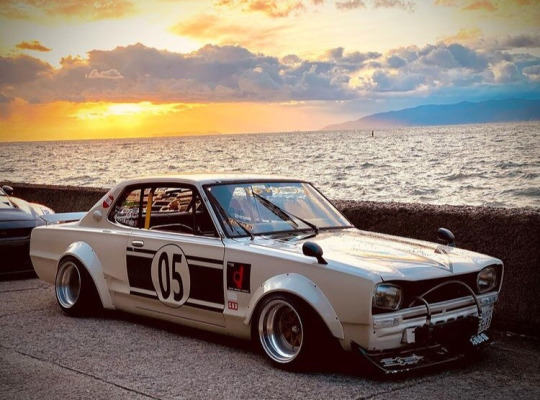



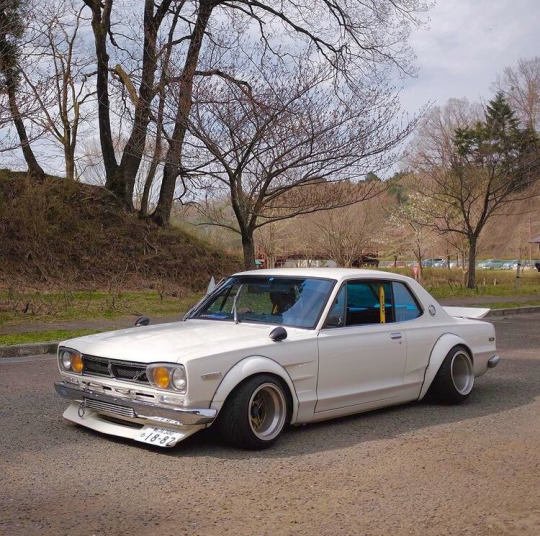
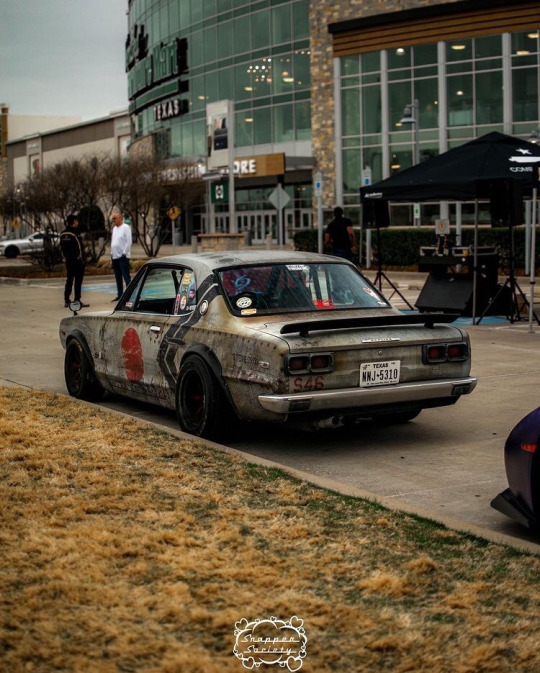
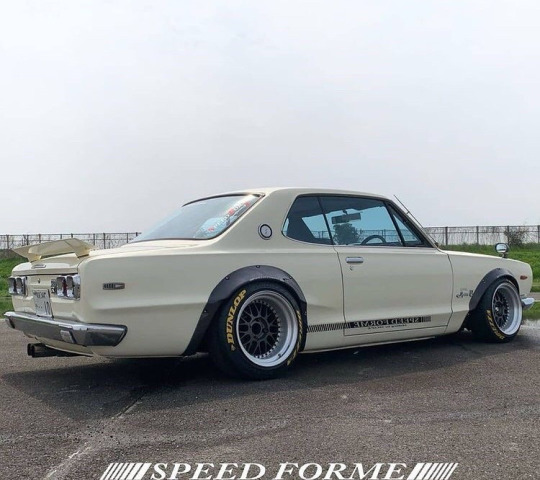
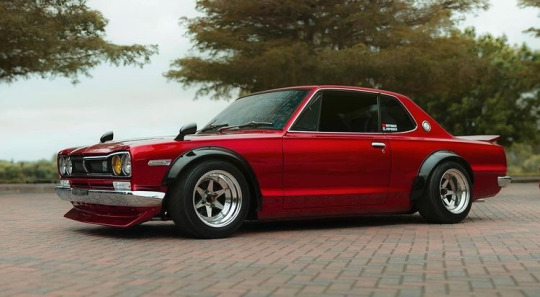
TOP 10: Nissan Skyline GT-R Coupe C10
#TOP 10: Nissan Skyline GT-R Coupe C10#hakosuka#stance#modified#tuning#retro rides#tuner#slammed#street#imports#lowered#jdm#fitment#static#70s japanese sports cars#vintage cars#classic car#2022
323 notes
·
View notes
Text

Nissan Skyline GT-R Coupe C10
#Nissan Skyline GT-R Coupe C10#rhd#70s japanese sports cars#vintage cars#classic jdm car#stance#modified#tuning#retro rides#slammed#tuner#street#imports#jdm#fitment#static#kyusha#shakotan#hakosuka
1K notes
·
View notes
Text

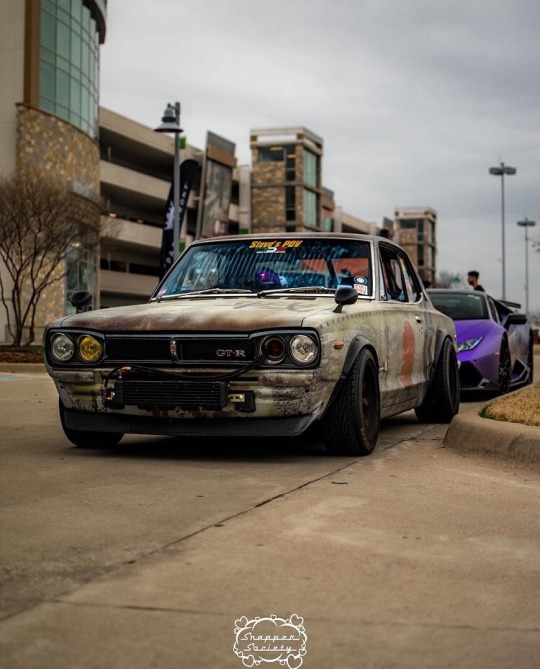
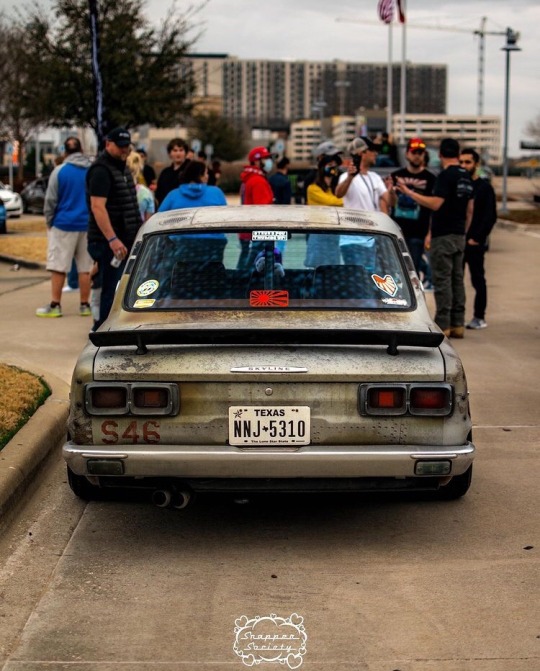

Nissan Skyline GT-R Coupe c10
#Nissan Skyline GT-R Coupe c10#hakosuka#stance#modified#tuning#retro rides#tuner#slammed#street#imports#lowered#jdm#kyusha#shakotan#fitment#static#patina#rat style#70s japanese sports cars#vintage cars#classic car
137 notes
·
View notes
Text


Nissan Skyline GT-R Coupe C10
#Nissan Skyline GT-R Coupe C10#hakozuka#hakosuka#stance#modified#tuning#retro rides#slammed#tuner#street#imports#jdm#fitment#rhd#70s japanese sports cars#vintage cars#classic jdm#kyusha#shakotan
1K notes
·
View notes
Text


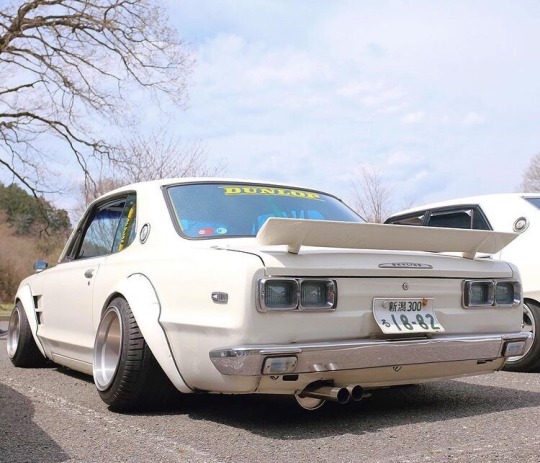
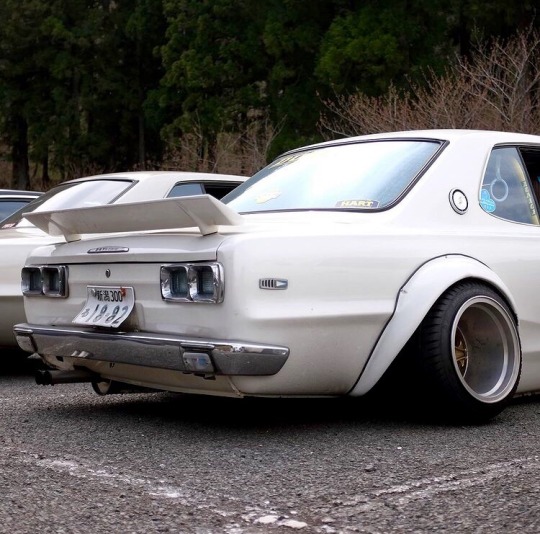
Nissan Skyline GT-R Coupe c10
#Nissan Skyline GT-R Coupe c10#hakosuka#rhd#70s japanese sports cars#vintage cars#classic jdm car#stance#modified#tuning#retro rides#slammed#tuner#street#imports#jdm#fitment#static#kyusha#shakotan
247 notes
·
View notes
Text

Nissan Skyline GT-R Coupe c10
#Nissan Skyline GT-R Coupe c10#stance#modified#tuning#retro rides#slammed#tuner#street#imports#jdm#fitment#static#hakozuka#hakosuka#rhd#liberty walk#70s japanese sports cars#vintage cars#classic jdm car#kyusha#shakotan
216 notes
·
View notes
Text
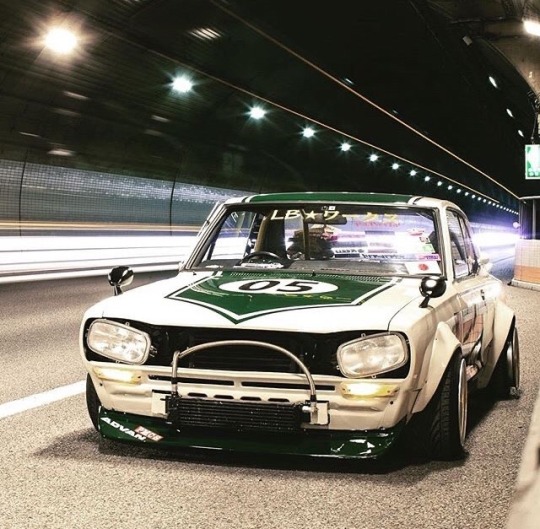
Nissan Skyline GT-R Coupe c10
#Nissan Skyline GT-R Coupe c10#hakosuka#jdm#rhd#70s japanese sports cars#vintage cars#classic jdm car#stance#slammed#fitment#imports#tuner#race liveries#kyusha#shakotan
283 notes
·
View notes
Photo

Nissan Skyline GT-R Coupe C10
#nissan skyline gt-r coupe c10#c10#jdm#rhd#hakosuka#stance#hellaflush#slammed#fitment#retro rides#track#modified#tuning#kyusha#shakotan#imports#tuner#street#70s japanese sports cars#vintage#classic car
3K notes
·
View notes
Photo

Nissan Skyline GT-R Coupe C10
@shin__0010
#nissan skyline gt-r coupe c10#jdm#rhd#hakosuka#stance#hellaflush#slammed#fitment#retro rides#modified#tuning#roll cage#imports#tuner#kaido racer#kyusha#shakot#street#70s japanese sports cars#vintage#classic car
793 notes
·
View notes